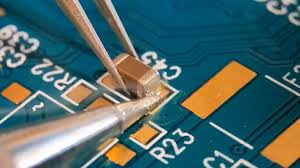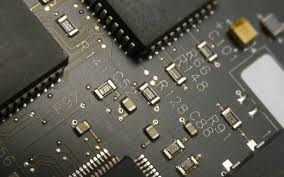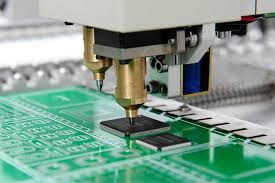Content Menu
● Introduction
● Understanding Surface Mount Technology (SMT)
>> History of SMT
● How SMT Works
● Advantages of Surface Mount Technology
● Disadvantages of Surface Mount Technology
● Applications of SMT
● Conclusion
● FAQs about Surface Mount Technology
>> 1. What are Surface Mount Devices (SMDs)?
>> 2. How does SMT differ from through-hole technology?
>> 3. Can SMT be used for high-power applications?
>> 4. What industries benefit most from Surface Mount Technology?
>> 5. Are there any limitations to using Surface Mount Technology?
Introduction
Surface Mount Technology (SMT) is a revolutionary method for assembling electronic components onto printed circuit boards (PCBs). This technology has transformed the electronics manufacturing industry, enabling the creation of smaller, lighter, and more complex devices. In this article, we will explore what SMT is, how it works, its advantages and disadvantages, and its applications in various industries.

Understanding Surface Mount Technology (SMT)
Surface Mount Technology refers to the process of mounting electronic components directly onto the surface of a PCB rather than inserting them into holes as done in traditional through-hole technology. Components used in SMT are known as Surface Mount Devices (SMDs), which are typically smaller and lighter than their through-hole counterparts.
History of SMT
SMT was first developed in the 1960s by IBM but gained significant traction in the 1980s when it became widely adopted in the electronics industry. The primary motivation behind SMT's development was to improve production efficiency and reduce the size of electronic devices. By eliminating the need for drilling holes in PCBs, SMT allows for denser component placement and more compact designs.
How SMT Works
The SMT manufacturing process can be divided into several key stages:
1. Design and Preparation: Before assembly begins, the PCB design is finalized, ensuring that it can accommodate SMDs. The design includes solder pads where components will be placed.
2. Solder Paste Application: Solder paste, a mixture of tiny solder particles and flux, is applied to the PCB using a stencil printer. This paste will later bond the components to the board during soldering.
3. Component Placement: Automated pick-and-place machines accurately position SMDs onto the solder paste-covered pads on the PCB. This process is highly efficient and can place thousands of components per hour.
4. Reflow Soldering: The assembled PCBs are passed through a reflow oven where heat is applied to melt the solder paste, creating strong electrical connections between the components and the PCB.
5. Inspection: After soldering, the boards undergo inspection to ensure all components are correctly placed and soldered.
Advantages of Surface Mount Technology
SMT offers numerous benefits over traditional through-hole technology:
- Higher Component Density: SMT allows for more components to be placed on a single board due to its surface mounting technique, enabling smaller device designs.
- Enhanced Production Speed: The automated nature of SMT significantly speeds up assembly times compared to manual processes.
- Reduced Manufacturing Costs: Fewer materials are required (no holes to drill), leading to lower costs for raw materials and labor.
- Improved Performance: Shorter electrical paths between components reduce signal interference and enhance performance, particularly in high-frequency applications.
- Flexibility in Design: Designers can create more complex circuits with greater flexibility in layout due to the compact nature of SMDs.

Disadvantages of Surface Mount Technology
While SMT has many advantages, it also presents some challenges:
- Rework Difficulty: Removing and replacing SMDs can be challenging due to their small size and delicate nature.
- Initial Setup Costs: The equipment required for SMT can be expensive, making initial investment high for new manufacturers.
- Thermal Management Issues: Smaller components may generate more heat, necessitating careful thermal management strategies.
Applications of SMT
Surface Mount Technology is widely used across various industries:
- Consumer Electronics: Smartphones, tablets, laptops, and televisions utilize SMT for their compact designs.
- Automotive Electronics: Modern vehicles employ SMT for engine control units, infotainment systems, and safety features.
- Industrial Equipment: PLCs (Programmable Logic Controllers) and other industrial controls often use SMT for reliable operation in demanding environments.
- Medical Devices: Imaging equipment and monitoring devices benefit from SMT's ability to create small yet powerful circuits.
Conclusion
Surface Mount Technology has revolutionized the electronics manufacturing landscape by enabling smaller, more efficient devices while reducing costs and production times. Its ability to support complex designs makes it essential for modern electronics across various industries. As technology continues to evolve, SMT will likely play an even more significant role in shaping future electronic devices.

FAQs about Surface Mount Technology
1. What are Surface Mount Devices (SMDs)?
SMDs are electronic components designed specifically for surface mounting on PCBs without needing leads that go through holes. They include resistors, capacitors, integrated circuits, and connectors.
2. How does SMT differ from through-hole technology?
Unlike through-hole technology that requires drilling holes into PCBs for component leads, SMT mounts components directly onto the surface of the PCB using solder paste and reflow soldering processes.
3. Can SMT be used for high-power applications?
Yes, while traditionally associated with low-power applications due to size constraints, many modern SMDs are designed to handle high power with appropriate thermal management solutions in place.
4. What industries benefit most from Surface Mount Technology?
Industries such as consumer electronics, automotive manufacturing, industrial equipment production, and medical device manufacturing benefit significantly from SMT due to its efficiency and compactness.
5. Are there any limitations to using Surface Mount Technology?
Yes, challenges include difficulties with reworking small components if mistakes occur during assembly and higher initial setup costs for necessary equipment compared to traditional methods.




















